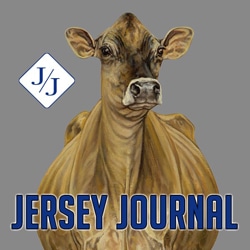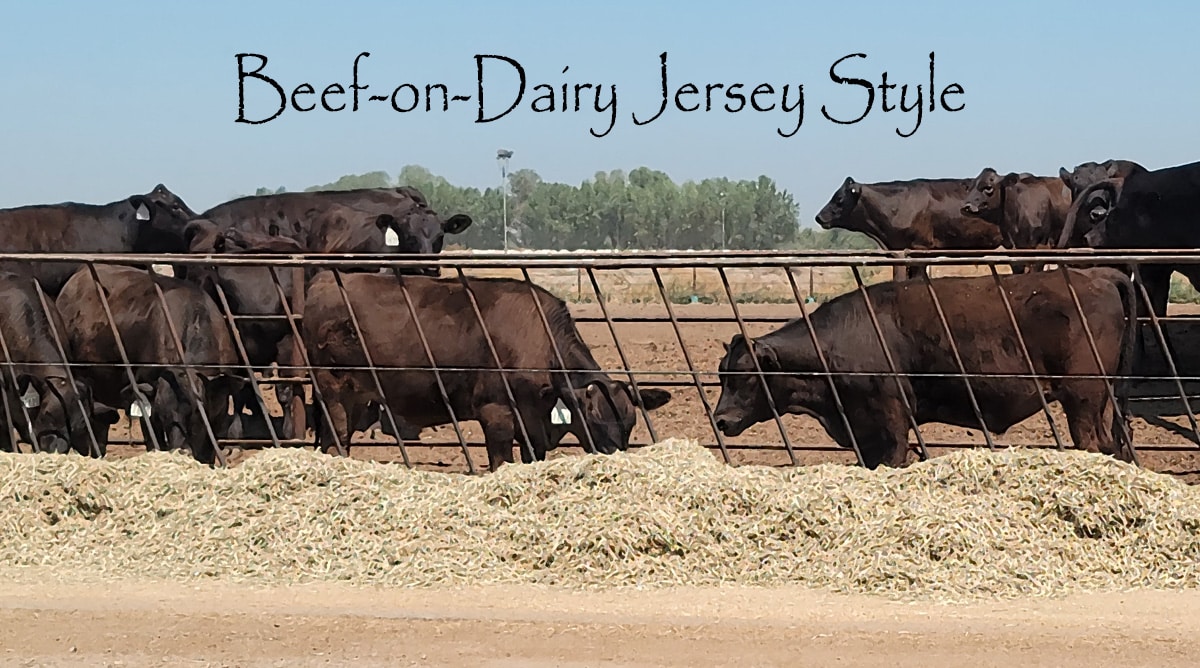Jersey Opportunities for Beef-on-Dairy Hinge on Niche Management
The notion of Bos taurus for both dairy and beef is as old as time. Cattle breeders, though, have made tremendous strides in productivity by breeding and managing them to excel in one or the other. But as dairy producers strive to manage heifer inventories, what is old is new again, with a twist. Instead of creating dual-purpose animals, dairy producers selectively mate a portion of the dairy herd to beef bulls to create premium beef animals, aka beef on dairy. The practice of breeding the top genetic females with sexed semen and the lower genetic females to beef bulls enables dairy producers to milk the most productive animals while also improving the genetic base and capitalizing on a growing market for beef-dairy crosses.
While the concept may now be obvious to dairy producers, and commercial beef producers more accepting of beef-dairy crosses, the industry is really in its infancy. Dairy producers cannot just flood the market with inferior animals and expect success. They need to learn how to breed, feed, and manage beef-dairy crosses to position themselves as viable suppliers of cattle for the beef industry.
There are special challenges for smaller-framed Jerseys in the beef marketplace. For success, Jersey producers cannot simply replicate the approach Holstein producers use to feed and manage their beef-dairy crosses. As with everything else related to the Jersey cow, special thought needs to be given to raising Jerseys as beef animals. Jersey producers may find more success with niche markets than supplying animals for the commercial feedlot industry.
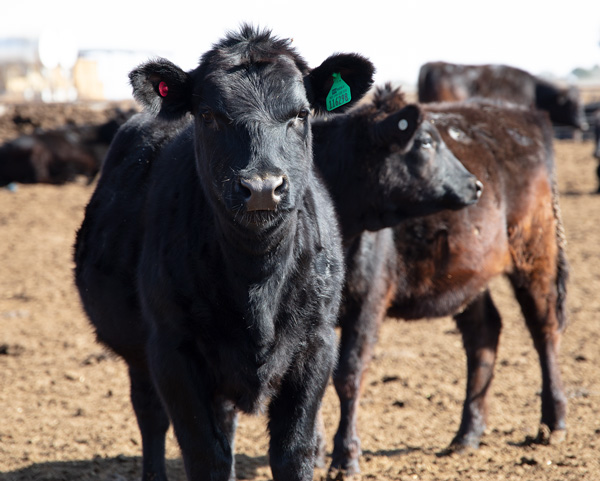
The challenges should not deter Jersey producers, though. There are immense opportunities for Jerseys, which are known for superior marbling and high quality-grades based on tenderness, juiciness and flavor. From a genetics standpoint, beef on dairy combines the best of both worlds, creating a win-win-win for the beef industry, consumers, and the environment. By working together and learning from each other, Jersey producers can develop a thriving market for their beef-dairy crosses, just as they have done for their milk.
Beef-on-Dairy Basics
Three primary drivers have contributed to the rapid rise of beef-on-dairy matings: 1.) the increased use of sexed semen due to fertility rates that now rival conventional semen and the availability of elite bull semen as sexed-only; 2.) heifer raising costs that have outpaced heifer prices; and 3.) the loss of management tools, like rBST, which has forced dairies to change culling practices to maintain production levels with an older, high-producing milking herd.
The practice of mating dairy cows to beef bulls has also become more popular because there is a market for mindfully mated, healthy crosses that are proactively managed.
“While there are many markets today for beef-on-dairy calves, access largely depends on location and volume,” noted Tyler Boyd, Hilmar, Calif. As general manager for Jerseyland Sires, he works with Superior Wagyu and Select Sires Inc. to create Jersey-Wagyu crosses. As a partner on his family dairy, Boyd-Lee Jerseys, Parrottsville, Tenn., he mates females to Angus and Wagyu sires to create beef animals for local markets.
“In dairy-rich areas, producers may have several market options (day-olds, bottle calves, weaned calves, feeder cattle, fat cattle ready for slaughter, or direct-to-consumer freezer or box beef) and their choice of breeds (Angus, SimAngus, Charolais, Limousin, Wagyu, or even purebred embryos),” Boyd continued.
Producers in other areas may have to get more creative with beef-on-dairy calves. Before you set your mind on a market and breed, you need to consider what makes the most sense financially. Day-old calves minimize risk but require a buyer to pick them up on a regular basis for a fair price. Bottle and weaned calves may enable a small producer to tap into a local market of buyers looking to raise their own beef, including those who were previously purchasing purebred Jersey bull calves. Weaned calves and feeder cattle might be the best solution for producers who need to maintain a minimum number of calves to make their calf-rearing system profitable. Farms with extra resources may be positioned to retain ownership and grow cattle all the way to harvest weight before selling them. They may also be profitable by selling beef directly to consumers.
Pay attention to livestock market trends as well. In most markets today, black-hided cattle sell better because of the popularity of “Angus” (black-hided, regardless of actual breed). Steers in the 400-600 lbs. range command top dollar. They are old enough to be beyond the expensive rearing period, but young enough to fully benefit from commercial feedlot management and rations. There are also niche markets for vegetarian-fed cattle or those raised without hormones. Some buyers will pay a premium for cattle that have been tagged and identified, vaccinated, fed colostrum, or specially managed in other ways.
“When calculating the financial impact of selling beef crosses as day-olds or young calves versus raising them out, don’t forget to include the time value of money,” advised Boyd. “Semen costs are incurred at least nine months before the calf is sold, animals are sometimes sold before calving, and there are mortality losses as well. A day-old profit of $50 may be worth more than $75 in 12 months.”
If you opt to raise your beef crosses, keep in mind this is a long-term investment. Nickel-and-diming the ration can be costly in the long run. Provide quality rations so daily gains can be maximized and the best price realized. If that is not an option, it is better to sell them as early as possible.
Jersey Opportunities
Jersey producers may stand to gain as much as anyone by breeding Jersey females to beef bulls due to the high fertility of Jersey females and the low value of Jersey bull calves.
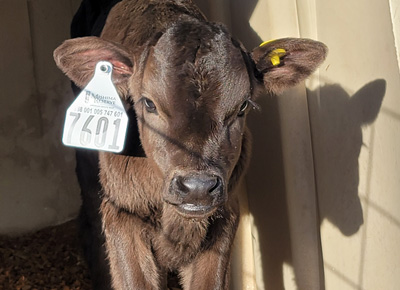
“A benefit of combining sexed semen with a beef-on-dairy program is the ability to increase the rate of genetic progress by creating replacement heifers from only the best animals,” explained Boyd. “Using beef semen on lower genetic females—often older, high-producing cows—allows producers to keep those cows around longer without stalling genetic progress. I refer to this mindset as ‘milk the phenotype, breed the genotype.’ Older cows are phenotypically better today, but in 2-3 years, the current heifers and young cows should be better. They just need time to develop and mature. Older cows will also be able to handle any potential calving difficulties more easily, reducing stress on the cow and labor in the maternity pen.”
Jersey beef crosses are generally bigger than purebred Jerseys, so pay close attention to calving dates and be ready to induce labor if a cow goes beyond her due date so the calf does not become too large. As well, the use of sexed semen on heifers leads to easier calvings for first-calf heifers because the calf is a smaller, purebred female.
The biggest challenge in adopting beef-on-dairy may be calculating replacement heifer needs and determining how many animals should be bred to beef semen. Most A.I. organizations offer programs to help dairy producers right size their heifer population to reduce costs and increase profitability. As well, institutions like the University of Wisconsin-Madison have programs designed to help dairy producers determine these numbers.
Sire Considerations
When it comes to choosing a breed, there is no “right” answer. “The best beef breed for Jerseys is the one that you will be able to market,” summed Boyd.
Angus has been heavily used to add size and marbling and yield a black-hided Jersey beef calf. Limousin is known to add muscle to the Jersey frame but does not marble as heavily as Angus. Charolais bulls have become more popular as they increase frame size and sire calves with smoky gray coats, which are easy to distinguish as newborns. Wagyu has found a niche due to its propensity for marbling and high carcass grade. Red Wagyu, aka Akaushi, have more beef character and growthiness than black Wagyu but don’t grade as well.
When selecting a specific bull, it’s important to consider the traits of greatest impact on your business. Boyd noted, “Conception rate is the primary driver since services per conception will have the biggest impact on both net profit and days open. Calving ease and birth weight follow.”
“For long-term buying relationships, there is a benefit in selecting for traits that benefit both the Jersey producer (sires with higher conception rates, lower birth weights, and easier calvings) and the buyer (sires with high yearling weights, large ribeyes, and high marbling). A producer planning to raise cattle themselves may also want to pay attention to docility, particularly if they do not have stout handling facilities to work with beef crosses.”
Become familiar with beef industry terminology to ensure you choose bulls that meet your needs. In the beef industry, genetic evaluations are called Expected Progeny Differences (EPDs). They have been used for nearly four decades and are like Predicted Transmitting Abilities. Calving Ease (CE) is defined as the percentage of unassisted births by two-year-old beef heifers. The higher the value, the easier the calving should be. Birth Weight (BW), Weaning Weight (WW), and Yearling Weight (YW) represent the weight difference between progeny and average animals and are expressed in pounds. A negative BW indicates calves are smaller than average, which should equate to easier calvings.
Many state extension services have developed guides to help producers use EPDs. A.I. representatives should also be well-versed in genetics tools used by the beef industry.
An advantage of beef-dairy crosses is that their higher birth weights make them more resilient than purebred Jerseys due to the extra body fat they are born with. Because of this, dairy producers can expect noticeably lower calf mortality rates when calves are provided with high-quality colostrum, vaccinated, and given shelter.
“If you opt to use purebred beef embryos, sire selection is very important since many embryos come from oocytes harvested at the slaughterhouse from cows with minimal genetic documentation,” Boyd advised. “The lab in which the embryos were made also plays a role, as there appears to be a correlation between calf size and the media used to grow the embryo prior to implant. The upside is that embryo calves will fetch a higher price and can be easily marketed through local livestock auctions or privately to beef producers and commercial feedlot buyers.”
More to Learn
If you were to ask a packer to describe the ideal beef animal, he or she would likely say they want an animal that weighs 1,640 lbs. at harvest, grades Yield Grade 1 and Prime, and has a dressing of 64%. The beef chain is set up for animals like this. But because this goal is not practical for Jersey producers, they need to set their sights on other markets and choose beef sires that complement Jersey females.
The kinds of tools dairy producers often rely on to manage the dairy herd are simply not available for managing the beef-dairy herd. Data collection in the beef industry lags the dairy industry, which has heavily used A.I. for decades and regularly collects data across the animal’s lifespan. Some beef-on-dairy programs are now looking for ways to improve traceability and data collection from breeding to slaughter. Unfortunately, this is a slow process. Some beef breed associations are publishing EPDs for beef-on-dairy matings as well. But they are limited, and Jersey-specific data will be even more limited.
Ultimately, success hinges on using what we now know, learning from each other, and capitalizing on Jersey breed advantages.
A Jersey Producer’s Journey with Beef-on-Dairy
Among the Jersey producers who have found success developing a market for beef-dairy cattle is Scott Lindsay, who operates Pine Hill Jersey Farm LLC with his family in New Waterford, Ohio.
The Lindsays milk a herd of 420 Registered Jersey cows and raise 150 replacement heifers. They breed all heifers and 10% of the milking herd to sexed Jersey bulls and 90% of the milking herd to beef bulls.
The herd at Pine Hill Jersey Farm looks different today than it did eight years ago, when the Lindsays were milking 700 cows three times a day, raising 700-800 replacement heifers, and growing crops on 1,300 acres to feed the herd.
“We were at a pivotal point,” noted Lindsay. “Though we had been able to sell replacement springers for a good price, that market was drying up. And, like all Jersey producers, we struggled to even give away our bull calves.”
“We were working with Genex for our dairy sires, and this generated a conversation about the worthless bull calves. Our rep talked to us about using Lim-Flex (Limousin-Angus hybrid) bulls on our Jerseys, which initiated our journey with beef-on-dairy matings.”
In 2017, the Lindsays sold 500 head of milking cows and 150 springers to another dairy farm. They retained a nucleus of 150 older and problem cows, 550 heifers, and their better cow families, and dropped to twice a day milking. Within a couple of years, they were milking 400 cows, a herd better sized to the farm from a financial standpoint. The move freed up 300-400 acres that are now used to raise grains as cash crops.
Lindsay continues to use the Lim-Flex line and infrequently changes bulls, so calves are genetically consistent. Semen is relatively inexpensive ($6-8 per straw) and yields a black-hided calf. Calvings are rarely difficult, with average birth weights of 65 lbs. But because gestation for beef animals is typically 5-7 days longer than Jerseys, he pays attention to calving dates and closely monitors cows or heifers that go beyond their due dates. Occasionally, labor will be induced. Lindsay is also careful to avoid overcrowding the maternity pen.
Pine Hill Jersey Farm genotypes all Jersey heifer calves to identify the top 10% as genetic stock. The herd is enrolled on REAP and has a 2022 lactation average of 20,909 lbs. milk, 1,025 lbs. fat and 733 lbs. protein. With the latest appraisal, the herd includes 22 Excellent and 317 Very Good cows. The herd ranks among the top 70 herds in the country for genetic merit with a herd average JPI of +49.
It was Genex’s relationship with buyers that enabled Pine Hill Jersey Farm to break into the beef market. Initially, a buyer that specialized in Lim-Flex calves bought back all the beef calves, so the Lindsays had a ready market. When that arrangement was no longer available, they began partnering with a local dairy producer who had sold his cows to raise beef animals.
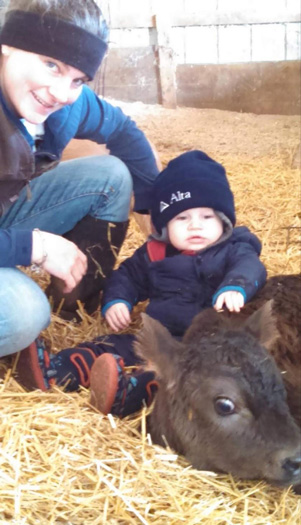
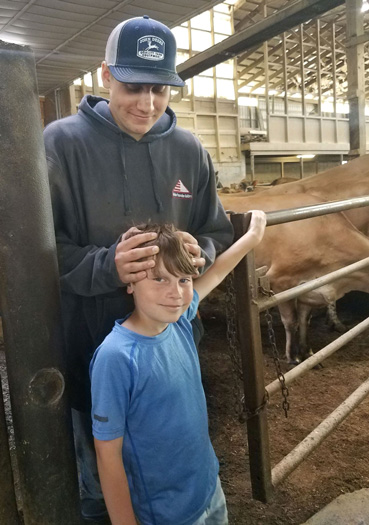
“We raise them to one or two weeks-of-age, when they have been dehorned and are beyond the critical health stage where issues typically arise,” said Lindsay. “Though they don’t pay a premium for this, they buy everything—bulls and heifers—and we have a consistent market we can count on. This equates to about 300-370 head every year.”
The Lindsays hold back about five head of beef calves every month to raise for their own freezer beef market. They are raised with the Jersey heifers until they are 500-600 lbs. and then grouped in a finishing pen until they reach 1,200 lbs. at 12-17 months-of-age.
“Our freezer beef market has exploded solely through word of mouth, with zero advertising,” explained Lindsay. “I have no problem getting rid of our beef calves. If we don’t have a buyer, I can sell them at the local auction when they reach 1,340-1,400 lbs. and get a good price.”
“The move to beef-on-dairy has been wonderful for us,” summed Lindsay. “Our bull calf sales from a herd of 600 cows used to be $1,300 in a good year. Today we are getting $65,000 a year from beef sales. We only grow the heifers we need and have eliminated the Jersey bull calf market. We are no longer killing ourselves with 3x milking and farming 1,300 acres just to feed the cows.”
“Probably the hardest thing for me to overcome was my mindset as a dairy producer. It was really, really hard for me to breed a 90-point cow to a beef bull. In the end, though, it sometimes just makes more financial sense for me to do so.”
Feature photo: Wagyu are popular service sires for Jersey females as Wagyu-Jersey crossbreds yield heavily marbled, high grading carcasses. Photo courtesy Tyler Boyd.
